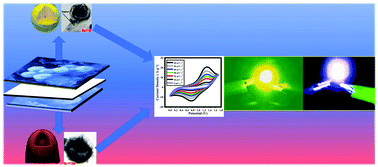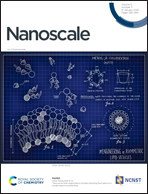Formation of graphene-wrapped multi-shelled NiGa2O4 hollow spheres and graphene-wrapped yolk–shell NiFe2O4 hollow spheres derived from metal–organic frameworks for high-performance hybrid supercapacitors†
Abstract
To construct a supercapacitor (SC) with considerable performance, synthesis of an electrode material with a highly porous structure is necessary. Herein, an efficient metal–organic framework (MOF)-derived procedure is offered to construct a graphene wrapped multi-shelled NiGa2O4 hollow sphere (GW-MSNGOHS) positive electrode material and a graphene-wrapped yolk–shell NiFe2O4 hollow sphere (GW-YS-NFOHS) negative electrode material with a highly porous nature in SCs. The GW-MSNGOHS and GW-YS-NFOHS electrodes exhibit excellent capacities (∼411.25 mA h g−1 and 254.25 mA h g−1, respectively, at 1 A g−1), reasonable rate performances (75.85%, and 62.7%, respectively), and outstanding cyclability (98.9% and 90.9%, respectively). Benefiting from the reasonably engineered negative and positive electrodes, the fabricated asymmetric device (GW-MSNGOHS//GW-YS-NFOHS) can show an excellent energy density (ED) of 118.97 W h kg−1 at a power density (PD) of 1702 W kg−1, an exceptional robustness of 92.1%, and an excellent capacity (Cs) of 140.2 mA g−1.

- This article is part of the themed collection: Nanoscale Most Popular 2020 Articles


 Please wait while we load your content...
Please wait while we load your content...